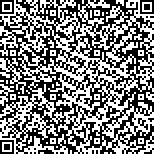| 摘要: |
| 软体动物线粒体基因组在大小、结构和功能存在巨大变异,不同组装策略往往会得到差异的结果,明确适合软体动物的线粒体基因组组装策略对开展基于线粒体基因组的相关研究具有重要意义。通过基因组浅层测序技术获取了软体动物主要类群(双壳纲、腹足纲、多板纲、头足纲)代表种类的基因组数据,应用目前主流的线粒体基因组组装软件(NOVOPlasty、Ray、MitoZ、SPAdes、GetOrganelle和MEANGS)在相同条件下进行组装并比较各个软件的组装效果[运行时间、基因组覆盖度、准确性、线粒体重叠群(Contigs)数目、结果文件存储空间占用],探讨线粒体基因组的组装策略。结果表明,基于不同组装策略的线粒体基因组组装软件的组装效果与物种的生物学分类无关,而与线粒体基因组大小有关。基于参考序列组装策略的NOVOPlasty和基于从头组装策略的MEANGS、GetOrganelle和MitoZ更适用于组装有着常见线粒体基因组大小的软体动物类群,MEANGS、Ray和SPAdes更适用于组装线粒体基因组偏大的软体动物类群,MitoZ可以一次性完成线粒体基因组的组装、注释以及可视化工作。研究结果提示不同的组装策略各有优势和不足,可以通过分析对象隶属于同属或者同科物种的线粒体基因组大小特征判断选择最适合的组装软件,常见大小的线粒体基因组组装建议优先选择NOVOPlasy和MEANGS,偏大线粒体基因组的组装建议优先选择MEANGS。 |
| 关键词: 线粒体基因组 组装策略 组装软件 软体动物 |
| DOI:10.11693/hyhz20220700190 |
| 分类号: |
| 基金项目:海南省科技计划三亚崖州湾科技城联合项目,320LH019号;国家自然科学基金项目,31772414号;中央高校基本科研业务费项目,201964001号。 |
附件 |
|
| COMPARATIVE ANALYSIS OF DIFFERENT STRATEGIES OF MOLLUSCAN MITOCHONDRIAL GENOME ASSEMBLY |
|
Xu Tao1, Kong Ling-Feng1,2,3
|
|
1.Key Laboratory of Mariculture, Ministry of Education, Ocean University of China, Qingdao 266003, China;2.Sanya Oceanographic Institution, Ocean University of China, Sanya 572000, China;3.Laboratory for Marine Fisheries Science and Food Production Processes, Laoshan Laboratory, Qingdao 266237, China
|
| Abstract: |
| Mollusk mitochondrial genomes vary greatly in size, structure, and function, and different assembly strategies frequently produce different results. It is critical to determine the best mitochondrial genome assembly strategies for mollusks, and to conduct relevant studies using mitochondrial genomes. We obtained genomic data for representative species of major mollusk taxa (Bivalvia, Gastropoda, Polyplacophora, and Cephalopoda) based on genome skimming, and assembled them under the same conditions using current mainstream genome assembly software (NOVOPlasty, Ray, MitoZ, SPAdes, GetOrganelle and MEANGS). The mitochondrial genome assembly strategies were compared with the assembly results (duration, coverage, accuracy, mitochondrial contigs, and space) of each software. Results show that the assembly effectiveness of mitochondrial genome assembly software in different assembly strategies is independent of biological classification of the species and is related to the mitochondrial genome size. The NOVOPlasty in mitogenome-reference assembly strategy and MEANGS, GetOrganelle, and MitoZ in de novo assembly strategy are more suitable for assembling molluscan taxa with common mitochondrial genome sizes. MEANGS, Ray, and SPAdes are more suitable for assembling molluscan taxa with large mitochondrial genomes, and MitoZ can assemble, annotate, and visualize the mitochondrial genome at once. Results suggest that different assembly strategies have own advantages and disadvantages, and the most suitable assembly software can be selected by analyzing the size characteristics of mitochondrial genomes of species belonging to the same genus or family. The NOVOPlasy and MEANGS are recommended for the assembly of mitochondrial genomes of common sizes, and the MEANGS is recommended for the assembly of large mitochondrial genomes. |
| Key words: mitochondrial genome assembly strategy assembly software mollusks |
